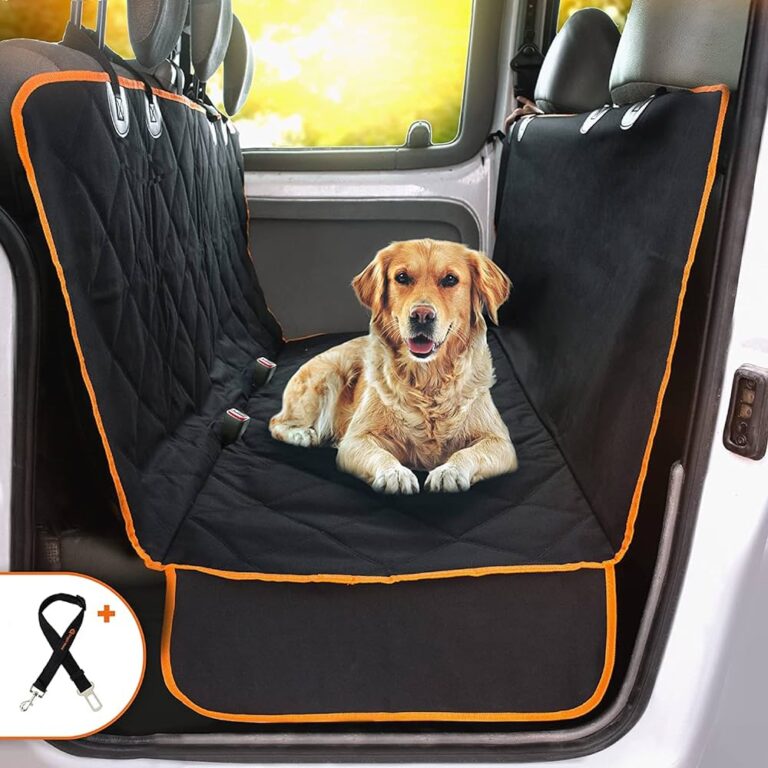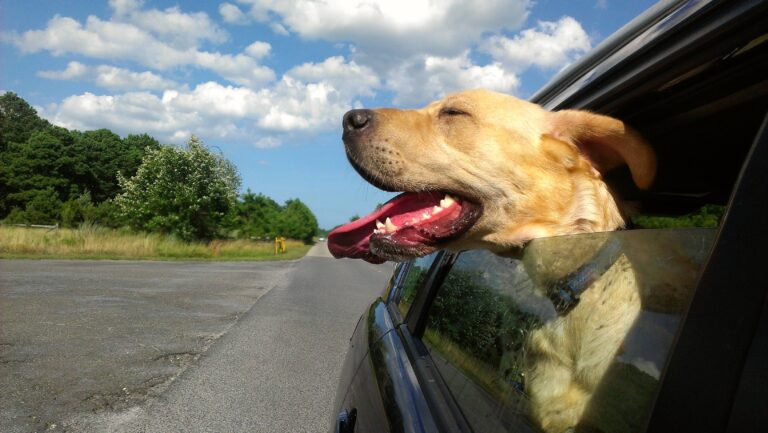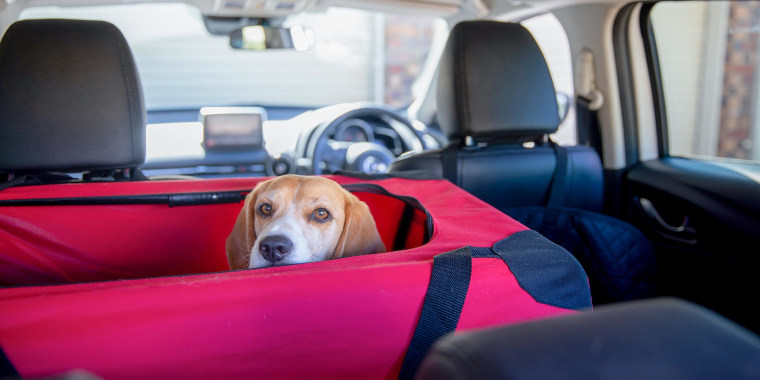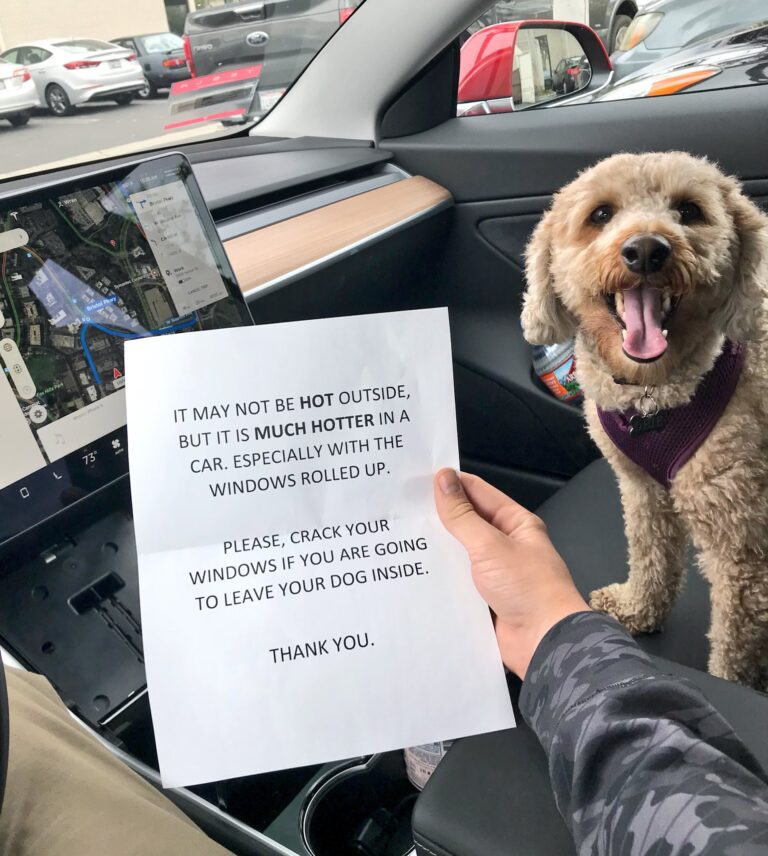Can You Desensitize a Dog from Car Sickness? Proven Tips
Yes, you can desensitize a dog from car sickness. This involves gradual exposure and positive reinforcement techniques.
Car sickness in dogs is a common issue that many pet owners face. It can make traveling with your furry friend stressful and unpleasant. Desensitizing a dog from car sickness requires patience and consistency. Begin by associating car rides with positive experiences, such as treats or playtime.
Start with short trips and gradually increase the duration. Ensure your dog is comfortable and secure in the car. Regular practice and positive reinforcement can help your dog associate car rides with positive outcomes. Over time, your dog can become more comfortable and less prone to car sickness, making travel more enjoyable for both of you.
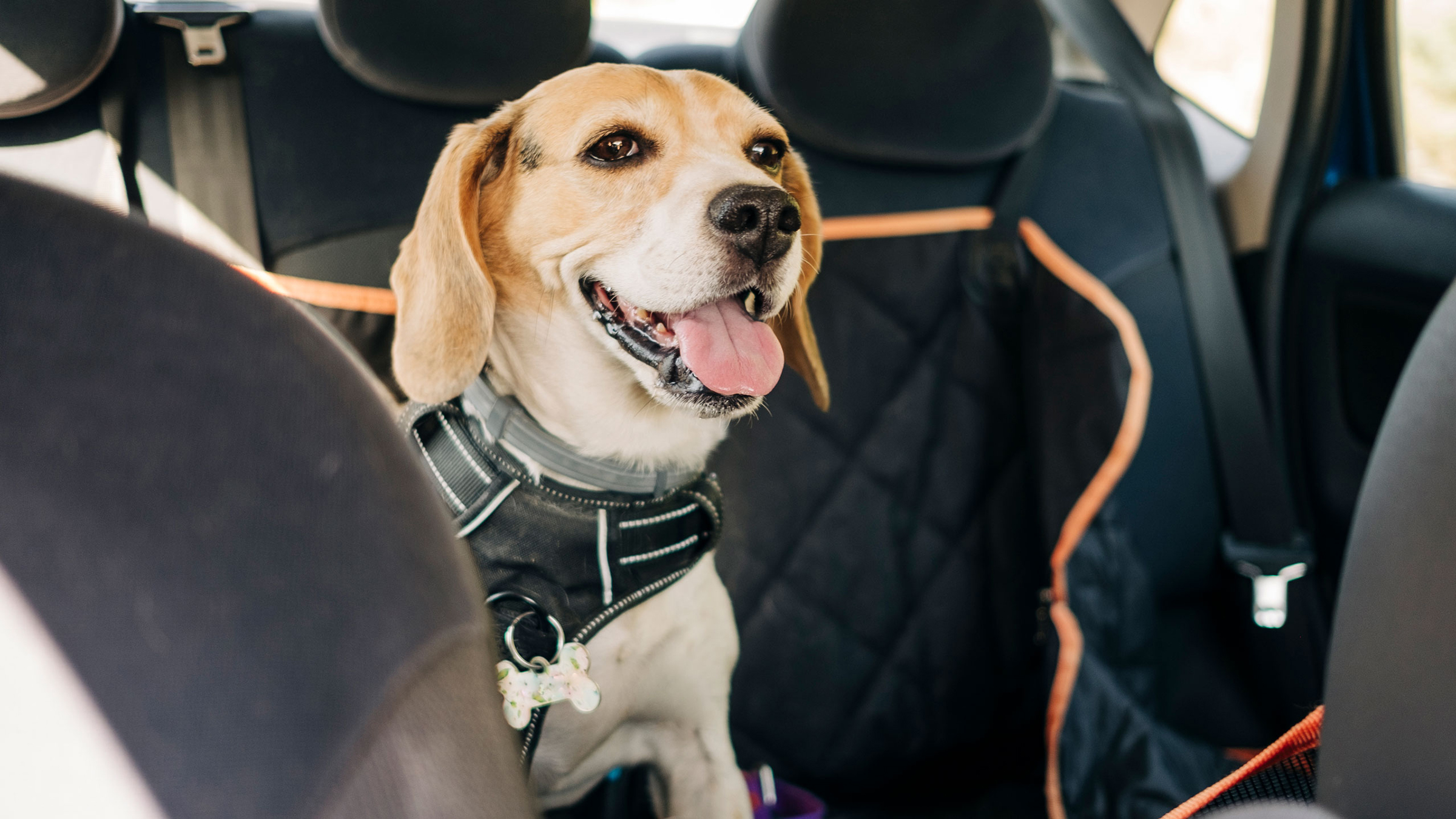
Credit: www.goodrx.com
Introduction To Canine Car Sickness
Many dogs love car rides, but some suffer from car sickness. This condition can make travel stressful for both the dog and the owner. Understanding the signs and causes of car sickness in dogs is the first step to helping them.
Signs Of Car Sickness In Dogs
Recognizing the signs of car sickness in dogs is crucial. Common symptoms include:
- Drooling excessively
- Whining or crying
- Yawning frequently
- Panting heavily
- Vomiting
- Restlessness
Drooling and vomiting are the most obvious signs. If your dog shows these signs, it might be experiencing car sickness.
Why Do Dogs Experience Car Sickness?
Dogs can experience car sickness for several reasons. The most common cause is motion sickness. Dogs’ inner ears help them balance. When the motion of the car conflicts with what they see, they can feel dizzy and nauseous.
Anxiety and stress can also contribute to car sickness. Some dogs associate car rides with unpleasant experiences, making them anxious. This anxiety can lead to physical symptoms like vomiting.
Puppies are more likely to suffer from car sickness than adult dogs. Their inner ears are still developing, making them more prone to motion sickness.
The Role Of Desensitization
Car sickness in dogs can be distressing for both pets and their owners. This problem can make travel difficult. Desensitization offers a way to ease this issue. It helps your dog get used to the car and reduce motion sickness.
What Is Desensitization?
Desensitization is a training method. It helps dogs become less sensitive to certain triggers. This involves exposing the dog to the trigger in a controlled way. The goal is to make the trigger less scary or stressful.
In the case of car sickness, the trigger is the car itself. By slowly increasing the dog’s exposure to car rides, the dog can learn to tolerate them better.
How It Can Help With Car Sickness
Desensitization can be very effective for car sickness. Start by letting your dog sit in a stationary car. Give treats and praise to create a positive association.
Next, turn the car on but keep it parked. Repeat the process with treats and praise. Gradually increase the steps by driving short distances.
Over time, your dog will become more comfortable. The car will no longer seem scary. This can reduce or eliminate car sickness.
Here is a simple table to guide you through the desensitization steps:
| Step | Action | Reward |
|---|---|---|
| 1 | Let the dog sit in the car | Treats and praise |
| 2 | Turn the car on, but keep it parked | Treats and praise |
| 3 | Drive short distances | Treats and praise |
| 4 | Gradually increase driving time | Treats and praise |
Patience is key. Each dog learns at its own pace. Consistency in training will yield the best results.
By following these steps, you can help your dog enjoy car rides. This makes travel easier and more enjoyable for both of you.
Preparation For The Desensitization Process
Getting your dog ready for desensitization from car sickness can be a game-changer. Proper preparation can make the process smoother and more effective. This involves creating a positive environment and gathering essential items for the journey. Let’s dive into the details.
Creating A Positive Environment
Your dog needs to feel safe and comfortable in the car. Begin with short, stationary visits to the car. Let your dog explore the space at their own pace.
- Reward them with treats when they enter the car.
- Use a favorite toy to make the car a fun place.
- Keep the car stationary initially to avoid stress.
Gradually increase the time spent in the car. Start with 5 minutes and slowly build up to longer periods. Always keep the environment calm and stress-free.
Essential Items For The Journey
| Item | Purpose |
|---|---|
| Dog Harness | Keeps your dog secure and safe. |
| Comfortable Bedding | Provides a cozy spot to relax. |
| Water Bottle | Keeps your dog hydrated. |
| Favorite Toys | Offers comfort and distraction. |
| Treats | Rewards your dog for good behavior. |
Having these items ready can make the journey easier for your dog. A harness ensures safety, and comfortable bedding provides a cozy space. Water and treats keep your dog hydrated and rewarded.
Toys offer a distraction and comfort. Always bring these essentials for a smoother desensitization process.
Gradual Exposure Techniques
Car sickness in dogs can be distressing for both pets and owners. One effective way to help your furry friend is through Gradual Exposure Techniques. These methods involve slowly acclimating your dog to car rides. This step-by-step approach can help your dog feel more comfortable and less anxious during travel.
Starting With Short Trips
Begin by taking your dog on short car trips. These trips should last just a few minutes. The goal is to get your dog used to the car without causing stress.
- Start by sitting in the car with your dog without driving.
- Let your dog explore the car while it’s stationary.
- Gradually increase the time spent in the car.
Increasing Duration Gradually
Once your dog is comfortable with short trips, you can slowly increase the trip duration. This should be done in small increments to avoid overwhelming your dog.
- Start with 5-minute trips and observe your dog’s reaction.
- If your dog remains calm, extend the trip to 10 minutes.
- Continue to gradually increase the duration by 5-minute intervals.
Remember to offer positive reinforcement throughout the process. Give your dog treats and praise after each successful trip. This will help your dog associate car rides with positive experiences.
| Step | Duration | Goal |
|---|---|---|
| Step 1 | 5 minutes | Get comfortable in the car |
| Step 2 | 10 minutes | Stay calm during short trips |
| Step 3 | 15 minutes | Enjoy longer trips |
Creating Positive Associations
Many dogs experience car sickness, making travel stressful for both pets and owners. Creating positive associations with car rides can help desensitize your dog. This involves using treats, toys, and fun activities to make car rides enjoyable.
Using Treats And Toys
Using treats and toys can help create positive experiences for your dog. Start by giving your dog treats and toys near the car. Let your dog get comfortable with the car before starting the engine.
- Step 1: Place treats and toys inside the car. Encourage your dog to explore.
- Step 2: Sit with your dog in the car, giving treats and praise.
- Step 3: Start the engine while continuing to give treats. Do not drive yet.
- Step 4: Drive short distances, rewarding your dog with treats and toys.
Using this method helps your dog associate the car with fun and rewards, reducing anxiety and car sickness.
Combining Car Rides With Fun Activities
Pairing car rides with fun activities can make them more enjoyable for your dog. Plan trips to places your dog loves, like parks or beaches.
| Fun Activity | How to Combine |
|---|---|
| Park Visits | Take short car rides to the park. Reward your dog with playtime. |
| Beach Days | Drive to the beach. Let your dog enjoy running on the sand. |
| Playdates | Visit friends with dogs. Allow your dog to socialize and play. |
By associating car rides with fun destinations, your dog will start looking forward to getting in the car.
Behavioral Training Methods
Car sickness is common in dogs, but behavioral training can help. This involves teaching your dog to feel calm and safe in the car. Let’s explore some effective methods to desensitize your dog from car sickness.
Command Training
Command training is a helpful technique. Start by teaching basic commands like “sit” and “stay”. Use these commands to manage your dog’s behavior in the car.
- Ask your dog to sit before entering the car.
- Use the stay command to keep them calm during the ride.
Practice these commands at home first. Gradually introduce them in the car. This helps your dog associate the car with positive experiences.
Reward-based Incentives
Reward-based incentives are effective for training. Use treats and praises to encourage good behavior.
- Give your dog a treat when they enter the car calmly.
- Praise them during the ride if they stay calm.
- Offer a special toy that they only get in the car.
Consistency is key. Always reward your dog for calm behavior. This helps them feel secure and reduces car sickness.
| Training Method | Steps |
|---|---|
| Command Training |
|
| Reward-Based Incentives |
|
Managing And Preventing Nausea
Car sickness can be a troublesome issue for many dogs. It can turn a simple car ride into a stressful event. Thankfully, managing and preventing nausea in dogs is possible with the right strategies. Below, we explore effective methods to help your dog feel better during car trips.
Dietary Considerations
Diet plays a crucial role in managing nausea in dogs. Feeding your dog a small meal a few hours before the trip can help. Avoid feeding them right before the journey. This can prevent an upset stomach.
- Provide water in small amounts. Too much water can cause discomfort.
- Avoid rich or fatty foods. These can upset the dog’s stomach.
- Consider feeding your dog a bland diet on travel days. Foods like boiled chicken and rice can be soothing.
Always consult your vet before making major dietary changes.
Over-the-counter Solutions
Over-the-counter solutions can also help manage car sickness in dogs. Some common options include:
- Ginger: Ginger can soothe the stomach. You can offer ginger treats made for dogs.
- Antihistamines: Some antihistamines can help with nausea. Always check with your vet before using these.
- Herbal Remedies: Herbal remedies like chamomile can calm your dog. Ensure any product you use is safe for dogs.
Using these solutions can make car trips more comfortable for your dog. Always follow dosage instructions carefully.
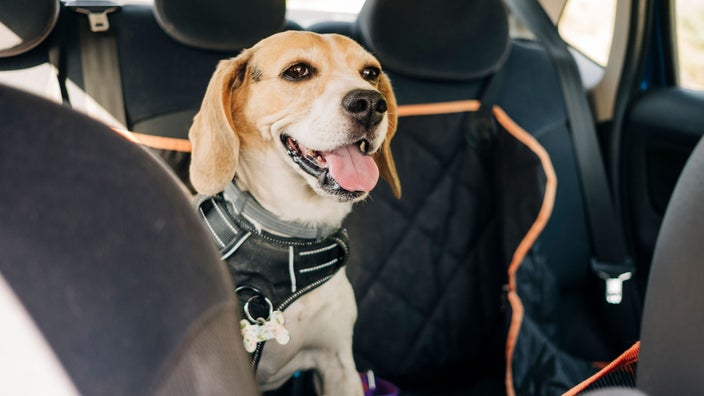
Credit: www.goodrx.com
When To Seek Professional Help
Dogs can suffer from car sickness just like humans. Sometimes, the symptoms may be too severe for home remedies. In such cases, seeking professional help becomes essential. Knowing when to consult experts can make a big difference in your dog’s well-being.
Consulting A Veterinarian
Veterinarians are the first point of contact for severe car sickness in dogs. They can diagnose the problem and suggest medical treatments. In some cases, anti-nausea medications may be prescribed. These medications can help to reduce symptoms significantly.
Physical exams can also rule out other health issues. Sometimes, underlying problems like ear infections can cause car sickness. A vet can also offer advice on dietary changes. Certain foods can make car sickness worse.
Working With An Animal Behaviorist
Animal behaviorists specialize in understanding animal behavior. They can help desensitize your dog to car travel. Behavioral training involves gradual exposure to the car. The goal is to make your dog feel comfortable and safe.
Step-by-step plans are often used. These plans may include short trips around the block. Rewards and positive reinforcement are essential parts of the process. The animal behaviorist will guide you through each step.
Below is a simple plan that an animal behaviorist may use:
| Step | Description |
|---|---|
| 1 | Introduce the car without moving. |
| 2 | Start the engine while the car remains stationary. |
| 3 | Take short, slow trips. |
| 4 | Gradually increase the length of trips. |
Consistency is key in behavioral training. Regular practice helps to build confidence in your dog. Consult an animal behaviorist for a personalized plan.
Maintaining Progress And Relapse Prevention
Maintaining progress and preventing relapses in dog car sickness involves consistent effort. Once your dog shows improvement, you need to keep up the practice. Below are effective strategies to ensure your dog remains comfortable during car rides.
Regular Practice
Consistency is key to maintaining progress. Plan short car rides regularly to keep your dog accustomed to the experience. Gradually increase the duration of these trips. This helps your dog build tolerance to longer journeys.
- Start with daily short trips.
- Gradually extend the length of the rides.
- Include positive experiences during the car rides.
Reward your dog with treats and praise during and after each car ride. Positive reinforcement helps your dog associate the car with pleasant experiences. This can reduce anxiety and discomfort.
Monitoring Your Dog’s Responses
Keep a close eye on your dog’s reactions during car rides. Watch for signs of discomfort such as drooling, whining, or restlessness. Note these signs and adjust your approach as needed.
Create a table to track your dog’s progress:
| Date | Duration of Ride | Dog’s Behavior |
|---|---|---|
| 01/10/2023 | 10 minutes | Calm, no signs of distress |
| 01/15/2023 | 20 minutes | Minimal drooling, slightly anxious |
Use this table to assess patterns and identify triggers. Adjust your approach based on the data you collect. If your dog shows signs of relapse, reduce the ride duration.
Consult your vet if your dog continues to struggle with car sickness. They can provide additional strategies or medications to help manage symptoms.

Credit: www.instagram.com
Conclusion: Journey Towards A Happy Traveler
Desensitizing a dog from car sickness can transform your furry friend into a happy traveler. By following the right steps and maintaining consistency, you can ensure your dog enjoys car rides. This section will guide you through the final steps.
Preparation Is Key
Proper preparation can make a huge difference. Ensure your dog is comfortable before starting your journey. Bring their favorite blanket or toy. This gives them a sense of familiarity.
Short Rides To Start
Begin with short car rides. Gradually increase the duration as your dog gets used to it. This helps them adjust without overwhelming them.
Observe And Adapt
Pay close attention to your dog’s behavior. If they seem stressed, stop and give them a break. Adapt your strategy based on their reactions.
Consistent Practice
Regular practice is crucial. Take your dog on car rides frequently. Consistency helps them build confidence and reduces anxiety.
Reward Positive Behavior
Whenever your dog remains calm during a ride, reward them with treats. Positive reinforcement encourages good behavior. Your dog will associate car rides with positive experiences.
Consult A Professional If Needed
If your dog continues to struggle, seek advice from a vet. They may recommend medications or other techniques. Professional guidance can be invaluable.
Table: Tips For Desensitizing Your Dog
| Tip | Description |
|---|---|
| Preparation | Bring familiar items to comfort your dog. |
| Short Rides | Start with brief trips and gradually extend them. |
| Observe | Watch your dog’s reactions and adjust accordingly. |
| Consistency | Practice car rides regularly to build confidence. |
| Rewards | Use treats to reinforce positive behavior. |
| Professional Help | Consult a vet if needed for additional support. |
Frequently Asked Questions
How Can I Stop My Dog From Being Car Sick?
To stop your dog from being car sick, try short trips first. Gradually increase travel time. Ensure proper ventilation. Avoid feeding your dog right before travel. Use dog car seats or harnesses for comfort. Consult your vet for possible medications.
Will My Dog Outgrow Car Sickness?
Yes, many dogs outgrow car sickness as they get older. Puppies are more prone to it than adult dogs. Gradual exposure to car rides can help.
How To Desensitize A Dog To Car Rides?
Gradually introduce your dog to the car. Start with short, positive experiences. Use treats and praise. Increase ride duration slowly. Ensure comfort and safety with a pet seatbelt or crate.
Do Some Dogs Never Get Over Car Sickness?
Yes, some dogs never get over car sickness. It varies from dog to dog. Consult your vet for possible treatments.
Conclusion
Desensitizing a dog from car sickness is possible with patience and consistency. Start with short trips and gradually increase duration. Use positive reinforcement to make car rides enjoyable. Consult your vet for additional tips and support. With time and effort, your dog can enjoy car rides without discomfort.
- Can I Get in a Taxi Without a Car Seat? - January 26, 2025
- Can I Get Chlamydia From a Toilet Seat? - January 26, 2025
- Can I Get an Uber With a Car Seat? - January 26, 2025

